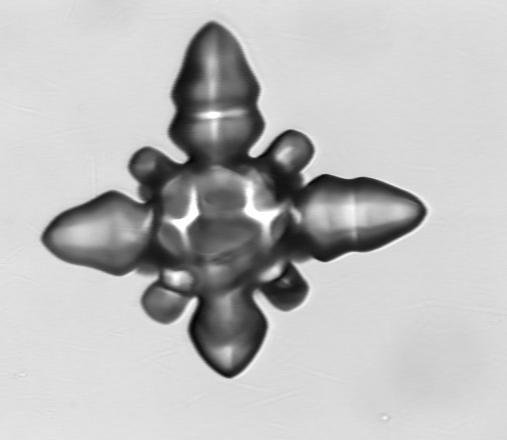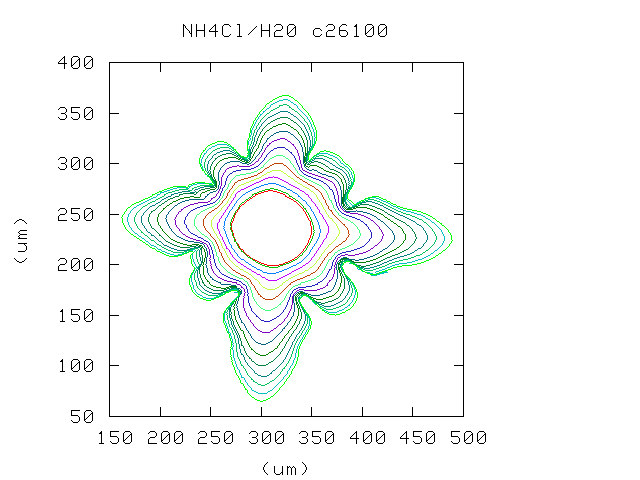
The early stages of crystal growth.
Working with Lafayette students, I have studied a number of aspects of the growth of dendritic crystals. We have sought to understand the fundamental physics that underlies the growth of these non-faceted crystals, but also to understand how those physical processes interact to produce the beautiful patterns we observe both in the laboratory and in nature.

The early stages of crystal growth.

Borders at 100-second intervals.
Movie of a crystal growing from a spherical seed.
In these experiments, the growth is limited by the diffusion of material through the solution. A growing interface rejects water, which must diffuse away before new material can attach.
A flat interface is unstable. Any outward "bump" is able to reject water more efficiently, so it will tend to grow. Countering this effect is surface tension, which tends to round out sharp bumps. The final growing shape is a compromise between these two effects. Though the initial instability of a flat interface is well understood, the final evolution into a complex dendritic crystal is far more complicated.